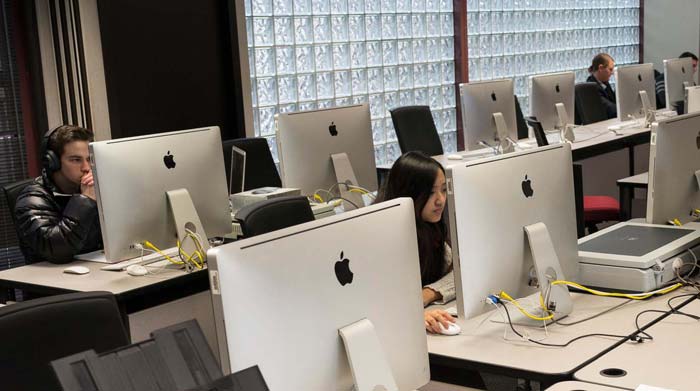American independent university Roger Williams University (RWU), based in Rhode Island, has a well-established architecture course that fosters rigorous technical and design curricula alongside a well-rounded liberal arts foundation.
A key part of its ideology is to offer students programmes that prepare them for professional careers, with working methodologies that mimic what they might find in a real-world firm.
As part of that ideology, architecture students have been enabled to work from anywhere, on any device, even when using graphics-intensive applications like Autodesk’s AutoCAD and Revit, and Adobe’s Creative Suite via a virtual desktop infrastructure (VDI).
The challenge
The biggest hurdle in RWU’s transition to a VDI was to provide access to the graphics-rich applications that its students require. VDI had the potential to let students work with much more flexibility, grow comfortable with real-world practices, and to eliminate cumbersome desktops from the architecture lab, thus freeing up more space for classrooms — and it all needed to work seamlessly for adoption to take hold.
The first VDI test systems did not work well with the intense graphics and video environment that an architecture department needs, explained RWU IT director James Galib.
VDI with Nvidia Grid
- Industry: Higher education
- Server hardware: Dell PowerEdge Servers, Grid K2
- VDI: Citrix XenDesktop with HDX 3D Pro
- Virtual GPU type: vGPU-shared
- Type of users: Power users and designers. Architecture and engineering students
- Number of users: 1,000+
- Applications: Autodesk AutoCAD, Revit. Adobe Creative Suite
Ryan Tiebout, RWU systems operations manager said: “As soon as we had more than eight to 10 people connected, the frame rates in 3D renderings would just go way down and get jumpy. The software applications became very clunky to use and it just wasn’t conducive to architecture work at all.”
The solution
Systems Integrator Logical Front set up RWU with a custom VDI system dubbed ‘R-Cloud’ featuring Dell Equallogic storage, Dell PowerConnectTM switching, and Dell PowerEdge servers running a total of twelve Nvidia GRID K2 boards through Citrix XenServer 7.
Nvidia’s GRID vGPU technology allows eight to 16 concurrent users to share one GPU — meaning that with this configuration, R-Cloud can support 96 to 192 concurrent graphics users.
RWU’s IT group saw immediate improvement with the graphics performance on virtual machines, and students responded enthusiastically to the technology and the flexibility it offered. With GRID, architecture students now have the ability to access graphics-intensive applications like AutoCAD outside the lab, and see the same high level of performance on any device.
The impact
After achieving great success with VDI in the architecture programme, RWU is in the process of rolling out R-Cloud to other departments as well, starting with engineering, with the ultimate goal of making it accessible to all students. Approximately 1,000 RWU students (a quarter of the student body) have access to R-Cloud , with varying levels of graphics power allotted based on their area of study.
“Students tell us that R-Cloud is very easy to access and runs very smoothly,” said Mr Galib. “They love the ability to work on their own devices and still access any application they need, even outside of the lab.
“Even students with lower-end devices are using R-Cloud successfully and get the same performance they would on a workstation thanks to GRID. The flexibility of VDI is a huge value-add to our students, and will allow them to save money on hardware and software in the long run, which is very important to us.”
If you enjoyed this article, subscribe to AEC Magazine for FREE






